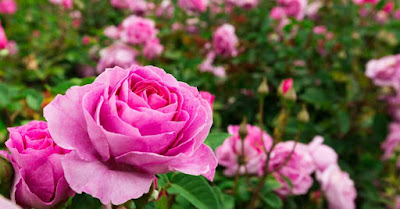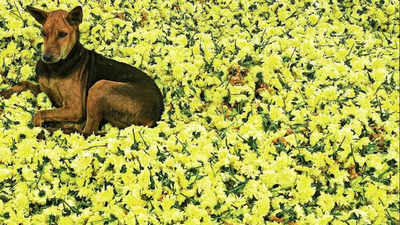Arthropodium cirratum: Rengarenga - Rengarenga Lily
Arthropodium cirratum: Rengarenga - Rengarenga Lily
Botanical name:
Arthropoduim cirratum Common name: Renga renga lily The Rengarenga Lily is a hardy, adaptable garden plant with good form and is a prolific flowerer in spring. It is one of our most useful native plants.
Endemic to New Zealand, it grows in coastal scrub and cliff faces around the North Island and top end of the South Island. I noted that it was growing naturally on Mount Manaia at the Whangarei Heads. It is a hardy garden plant with long and fleshy leaves, forming a solid clump. White to cream flowers with a touch of mauve appear in late November and December but it has a short flowering span. Flowers are held well above the leaves on long stems, and is evergreen. In flower, the dimensions are 70cm x 70cm. It Thrives in most soils in either sun or shade. It is happy as a graceful water-side plant and is a useful accent in the border. Naturally, it is also a hardy coastal plant, and is useful on dry banks. The flowers are good for cutting, lasting well in water. However, its ability to thrive in dry shade that is probably its most desirable quality. It is particularly fine as a groundcover under trees, flourishing even under pines. A. cirratum is not immune to frosts, but flourishes in Northland. The main enemy is slugs and snails, which can shred the leaves. Protect using your favourite anti-slug bait.
CORDYLINE
COrdyline pumilio: Dwarf Cabbage Tree - Pygmy Cabbage Tree - Ti koraha or Ti rauriki (Maori).
BOTANICAL NAME: Cordyline pumilio. Common Name, Dwarf Cabbage tree, Pygmy cabbage tree, Tī koraha or Tī rauriki, the Maori names. It is a narrow-leaved monocotaledon, native to New Zealand. It usually grows up to 1 metre (3 ft) tall. It can be easily missed if not in flower, as its long leaves and can be mistaken for a grass or a sedge. C. pumilio grows in the north of the North Island from North Cape at 34°S to Kawhia and Opotiki at about 38°S, generally under light forest and scrub. It was cultivated by Māori as a source of carbohydrate and used as a relish to sweeten less palatable foods. C. pumilio is the smallest of New Zealand's five native species of Cordyline, the most common being the Cabbage Tree, C. australis. The flower spike appears in November or December and is up to 60cm by 30cm (2ft by 1ft), very open, with small white or bluish-white flowers irregularly scattered along the branches. Photograps taken in the Coronation Reserve, in December 2013.
Disphyma austral subspecies australie: Horokaka (Maori) - New Zealand Ice Plant - Native Ice Plant.
BOTANICAL NAME: Disphyma australe subsp. austral, Common Name, Horokaka, which is the Maori Name, New Zealand Ice Plant, and Native Ice Plant. D. austral belongs to the famile Aizoaceae, and is also known as Mesembryanthemum austral. D. australe subsp. australe is a trailing, succulent herb native to New Zealand. It grows on Three Kings, North and South Islands and Stewart and Chatham Islands. It is a coastal plant and is rarely found inland. Its usual habitat is coastal cliff faces and rocks, estuaries and sandy beaches. Occasionally found in the Waikato on limestone or sandstone cliffs in lowland forest. It is often the only plant growing where seabirds nest. It produces white to deep pink flowers though out the year, but mainly in summer. They are smaller than the wild Ice Plant, Carpobrotus, abot 6cm across. Early Europeans pickled the leaves and the ripe fruit was eaten raw. Maoris treated boils with juices from the leaves. Photographs taken in the Sub-tropical Quarry Gardens, Russell Road, Whangarei.
HEBE species: Veronica - Koromiko
BOTANICAL NAME: Hebe - Common names Hebe and Shrubby Veronica. Hebe is a genus of plants native to New Zealand, Rapa in French Polynesia, the Falkland Islands, and South America. It includes about 90 species and is the largest plant genus in New Zealand. Apart from H. rapensis (endemic to Rapa), all species occur in New Zealand. This includes the two species, H. salicifolia and H. elliptica, that have distributions extending to South America. The genus is named after the Greek goddess of youth, Hebe. There are widely diverse foliage and flower forms. Those with the spiked inflorescence of white through pink to purple, are commonly called Veronica, but Veronica is a different genus. Identification of Hebe species is difficult, especially if they are not in flower. The plants range in size from dwarf shrubs to small trees up to 7 metres, and are distributed from coastal to
alpine ecosystems. Large-leaved species are normally found on the coast, in lowland scrub and along forest margins. At higher altitudes smaller-leaved species grow, and in alpine areas there are whipcord species with leaves reduced to thick scales. Hebes are grown in many gardens and public areas; they attract butterflies. Hebes cope with most soil types, and can be
propagated easily from both seed and cuttings. There are many cultivated hybrids, such as Hebe × franciscana.
BOTANICAL NAME; Hebe stricta. Common name Koromico. Koromiko is a 2-3 metre tall shrub with the classic arrangement of Hebe leaves in alternating opposite pairs. The yellow-green leaves are dull not glossy and are 5-10cm long x 2 cm wide, with smooth edges ending in a sharp point. The myriad tiny mauve/white flowers are arranged in a spike rather longer than the leaves and produced near the growing tip to display clearly above the foliage. There is an area around the Pukenui Falls in the A.H.Reed Memorial Kauri Park where Koromiko were so prolific that the stream is called the Wai-koromiko Stream. There are still koromiko growing on the banks.
















Comments
Post a Comment
If you have any doubts, Please let me know